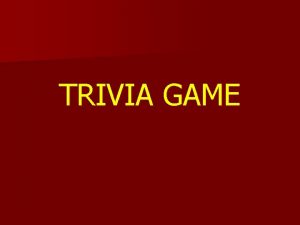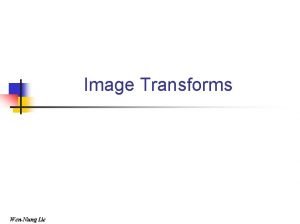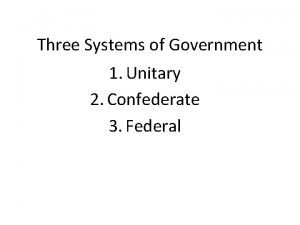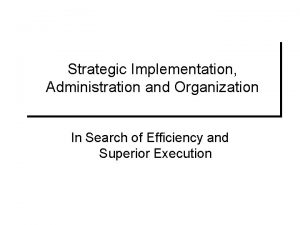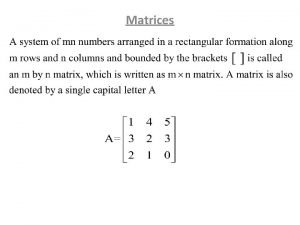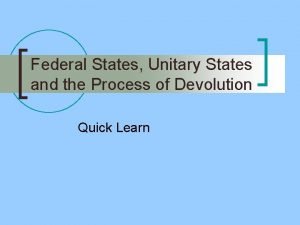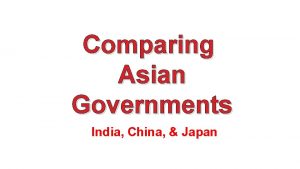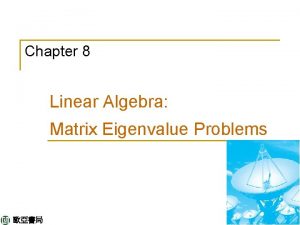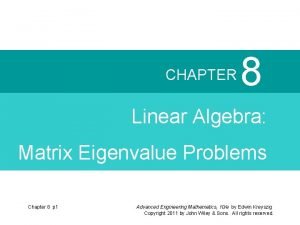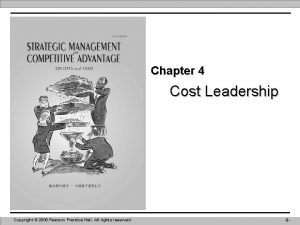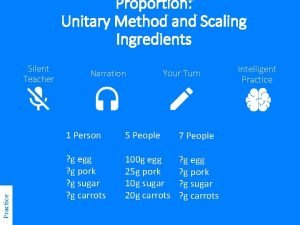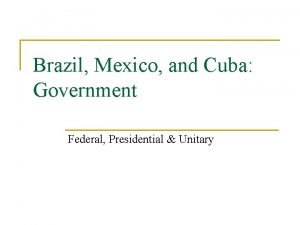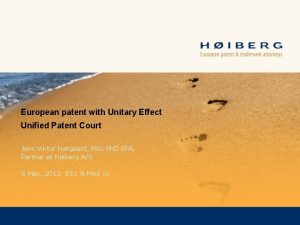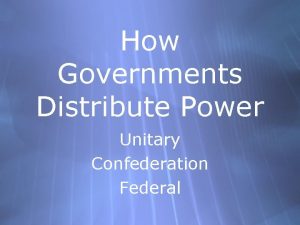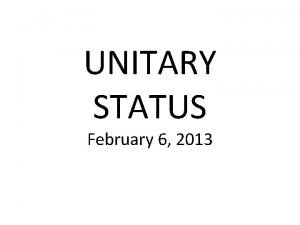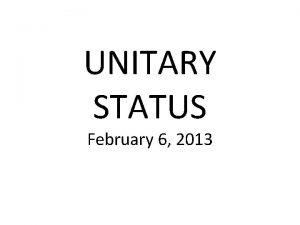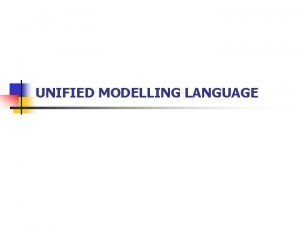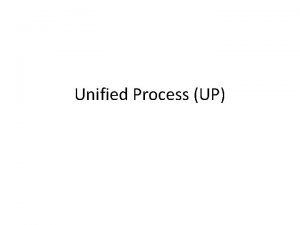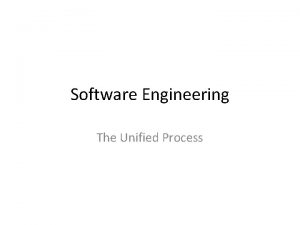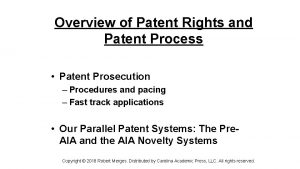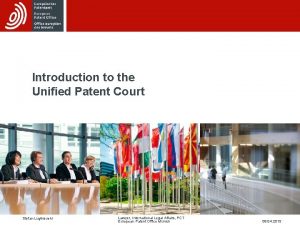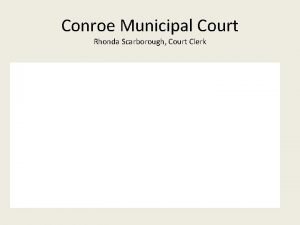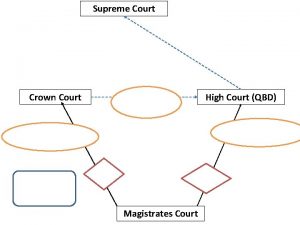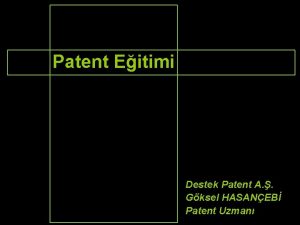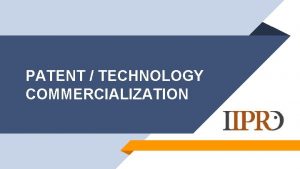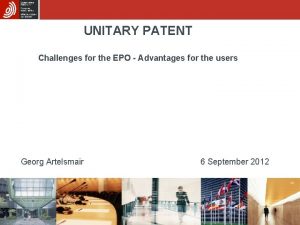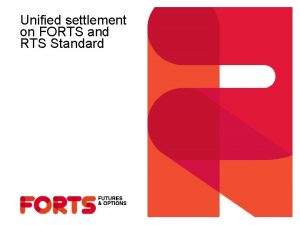The Unitary Patent and the Unified Patent Court






















- Slides: 22

The Unitary Patent and the Unified Patent Court Master in Diritto Privato Europeo Rome, Sapienza University, 10 May 2013 Vittorio Cerulli Irelli, Ph. D London vcerulliirelli@trevisancuonzo. com

INTRODUCTION – DIFFERENT TYPES OF IP RIGHTS IP RIGHT WHAT FOR? HOW? Patents Technical inventions Application and examination Copyright Creative and/or artistic works Exists automatically Trade marks Identification of products or services Use and/or registration design and product shapes External appearance Use and/or Registration Trade secrets Valuable information not known to the public Reasonable efforts to keep it secret

INTRODUCTION – DIFFERENT TYPES OF IP RIGHTS Trade marks: • “Apple“, “i. Phone" • “i. OS", “i. Tunes“ • Appearance of certain “apps” Patents (thousands): • Data-processing methods • Semiconductor circuits • Chemical compounds • UMTS/MPEG/etc. standards Copyrights: • Software code • Instruction manual • Ringtone Trade secrets: ? Designs (some of them registered): • Form of overall phone • Forms of the accessories

INTRODUCTION – ROLE OF PATENT PROTECTION Rights conferred by a patent (essentially the right to exclude from practicing the invention). Why if competition on the market is good? Economic rationale of patent protection in a nutshell - Incentive to invent Incentive to disclose Incentive to invest in R&D General consensus: patent rights are crucial for the correct functioning of the market Both competition and patent law are needed to ensure a dynamic economy

PATENT PROTECTION – AN EXAMPLE An example of patented invention: “Collapsible medical device (60) comprising a metal fabric formed of braided metal strands, the device (60) having a collapsed configuration for delivery through a channel in the patient’s body and having a generally dumbbell-shaped expanded configuration with two expanded diameter portions (64) separated by a reduced diameter portion (62) formed between opposed ends to the device, characterized in that the clamps (15) are adapted to clamp the strands at the opposed ends of the device. "

PATENT PROTECTION – CURRENT SYSTEM CURRENTLY TWO TYPES OF PATENTS: NATIONAL PATENTS Issued by the Italian Patent and Trademark Office Valid for the Italian territory Last 20 years EUROPEAN PATENTS Issued by the European Patent Office Unitary examination After grant: bundle of national patents (each valid in the designated state) Last 20 years

PATENT PROTECTION – OVERVIEW OF CURRENT GRANT REGIME

PATENT PROTECTION – REQUIREMENTS AND EFFECTS Requirements for patent monopoly • Novelty (own disclosure; no combination) • Inventive step ( «problem-solution approach» ; very discretional) • Industrial applicability (inventions excluded from patentability) • Full and enabling disclosure If validity requirements are met • Assessment of infringement (Article 52 Italian Industrial Property Code) Very difficult questions • Parallel proceedings in multiple European States conflicting results • The case of the AGA patent • But so complex parallel proceedings are not the norm (usually 2 parallel cases – DE + another jurisdiction the most common scenario)

PATENT PROTECTION – REQUIREMENTS AND EFFECTS If validity requirements are met and patent claims are infringed – strong measures protecting the patent monopoly: • Injunction • Seizure • Recall of products • Award of damages • Heavy evidentiary measures

PATENT PROTECTION - NO UNIFORMITY AMONGST INDUSTRIAL SYSTEMS Italy: • • • on average small firms; no patent tradition; very low propensity to patent. Other data: • • US (over 64. 000 yearly EP filings) JP (over 50. 000 yearly EP filings) CN (over 18. 000 yearly EP filings) KR (over 15. 000 yearly EP filings)

GREAT CHANGES AHEAD? The Unitary Patent Package: • Unitary Patent and • Unified Patent Court A centralized/unified system for the whole of Europe

THE UNITARY PATENT • • • Unitary Patent: European Patent granted by the EPO for the Union as a whole (grant system will be the same: designated territory will be the Union) Union: All EU members except Spain & Italy EU legislation: Reg (EU) no. 1257/2012 (enhanced cooperation); Reg (EU) no. 260/2012 (translations) Italy & Spain: challenge to ECJ regarding the legality of the enhanced cooperation ECJ, 16 April 2013, dismissal (Joined Cases C 274/11 and C 295/11) >Expected Member States >EU but possibly not Member States >EPC but not EU Member States

THE UNIFIED PATENT COURT Agreement signed on 19 Feb 2013: EU member states instituting a new unified court system for patent cases – 1 st supranational Court for disputes between private litigants in Europe For classical EP’s & new unitary patents One stop shop: 1 decision (cross-border) for all participating countries Exclusive court system for unitary patents (Art. 3 UPC, rec 25 Reg 1257/2012) Jurisdiction over already granted European patents (unless patentee opts out; joint jurisdiction over transitional period) Ratification process: Signed by (meanwhile) 25 EU countries, including Italy (Spain & Poland out); Entry into force after 13 ratifications, including UK, Germany, France (target date: somewhere in 2015. Overoptimistic? ) Unitary patent coupled with entry into force of international agreement on UPC

THE UNIFIED PATENT COURT Court of First Instance: • • • Central Division (Paris (seat) + London + Munich (sections) + Registry in Lux), always multinational Local Divisions (1 per country, if > 100 cases 1 xtra, max 4) Regional Divisions (2 or more countries, panel composition: 2 regionals, 1 pooler) Court of Appeal (Luxembourg) • 3 legal + 2 technical, always multinational Pool of judges (training facilities in Budapest): • • Local Div < 50 cases 1 national, 2 poolers Local Div > 50 cases 2 nationals, 1 pooler, sometimes permanent pooler

THE UNIFIED PATENT COURT Territorial jurisdiction for infringement actions – Article 33 UPC 1) Place of infringement 2) Residence or place of business of the defendant 3) As co-defendant, in any Division having jurisdiction for other co-defendants 4) Defendant from outside the Union: place of infringement or Central Division (or elsewhere as co-defendant, v. 3)) 5) Division of choice of both parties (including Central) 6) No Local/Regional Division Central Division Art. 33(2): infringement in 3 Regional Div defendant may ask referral to Central Division discouraging Reg Div’s?

THE UNIFIED PATENT COURT Territorial jurisdiction for invalidity actions 1) Central division 2) Local or Reg. division by way of counterclaim 3) If infringment proceedings are pending: only before the same local or reg. division Territorial jurisdiction for declarations for non-infringment 1) Central division, but – if action for infringment is filed within three months – the non-infringement action is stayed

THE UNIFIED PATENT COURT Language: • Language(s) of the country/countries of the Division • Local Division may add language (e. g. EN) • Parties may choose the language of the patent : Panel has to approve (if not parties can ask referral to the Central Division) • Panel may choose the language of the patent if the parties agree • Central Division: language of the patent • Infringement action before the Central Division: Union defendant may ask for translations in his language • Court of Appeal: language of first instance; flexibility with parties’ agreement • All Divisions: interpretation facilities at oral proceedings if requested

A FOCUS ON THE ITALIAN POSITION Enhanced cooperation on the creation of the unitary patent • 22 July. Decision Council 2011: annulment ofthe application Italian for 2011/167/EU of 10 March 2011 authorizing enhanced cooperation for the creation of unitary patent protection (main political reason: choice for “trilingual“ system) • 11 December 2012: negative opinion by the CJEU Advocate General • 16 April 2013: dismissal by the CJEU Agreement on a unified patent court • 19 February 2013: Italy signs the final version of the UPC Agreement. • Still to come: ratification by the Italian Parliament and signature by the President of the Italian Republic.

A FOCUS ON THE CJEU DISMISSAL OF ITALIAN AND SPANISH CHALLENGES Four main pleas: 1) Establishment of a Unitary patent is exclusive competence of the Union (falls within the notion of “competition rules necessary for the functioning of the internal market”). CJEU: NO, falls within the “rules for the establishment of the internal market” (i. e. shared competence between Member States and Union 2) Misuse of power (enhanced cooperation aimed at circumventing the unanimity rule for language arrangements in the establishment of EU IP rights). CJEU: NO, enhanced cooperation aimed at avoiding disagreement and admissible in matters governed by unanimity rule 3) Breach of the “last resort” rule. CJEU: NO, 10 years of fruitless negotiations and no prospect of compromise 4) Detriment for European integration. CJEU: NO, as of now we have bundle of different national rights. With unitary patent the bundle is overcome for participating member states. Whether the actual regulation is in line with this general principle is not the object of this action.

A RECAP: BENEFITS? Alleged benefits: • • Reduction of filing fees (? ) Multiple actions no longer needed Increased consistency throughout Europe Increased efficiency compared to our judicial system Are these real benefits for our industrial system? What do you think of the above features? Compliant with EU/IT constitutional law?

A RECAP: BENEFITS? 1) Increased costs (not to mention the cultural and language challenge) for Italian SMEs? 2) Sofisticated players unlikely to use the Italian local division especially if there will be 2 nationals and 1 pooler.

IF INTERESTED Main publicly available documents can be found at: www. upc. documents. eu. com
 Is there a basketball court above the supreme court
Is there a basketball court above the supreme court Uu
Uu Types of federalism
Types of federalism Unitary form organizational structure
Unitary form organizational structure Confederal system diagram
Confederal system diagram Orthogonal matrix determinant
Orthogonal matrix determinant Unitary elastic
Unitary elastic What is a unitary system of government
What is a unitary system of government Unitary systems
Unitary systems Price elasticity of demand formula examples
Price elasticity of demand formula examples Comparing asian governments
Comparing asian governments Unitary matrix
Unitary matrix Unitary matrix
Unitary matrix Unitary form organizational structure
Unitary form organizational structure Unitary form organizational structure
Unitary form organizational structure The cost
The cost Martha rogers theory of unitary human beings
Martha rogers theory of unitary human beings Unitary elastic demand
Unitary elastic demand Defensive realism
Defensive realism Is silent night unitary
Is silent night unitary Is cuba federal or unitary
Is cuba federal or unitary Power in politics definition
Power in politics definition Unitary definition
Unitary definition
